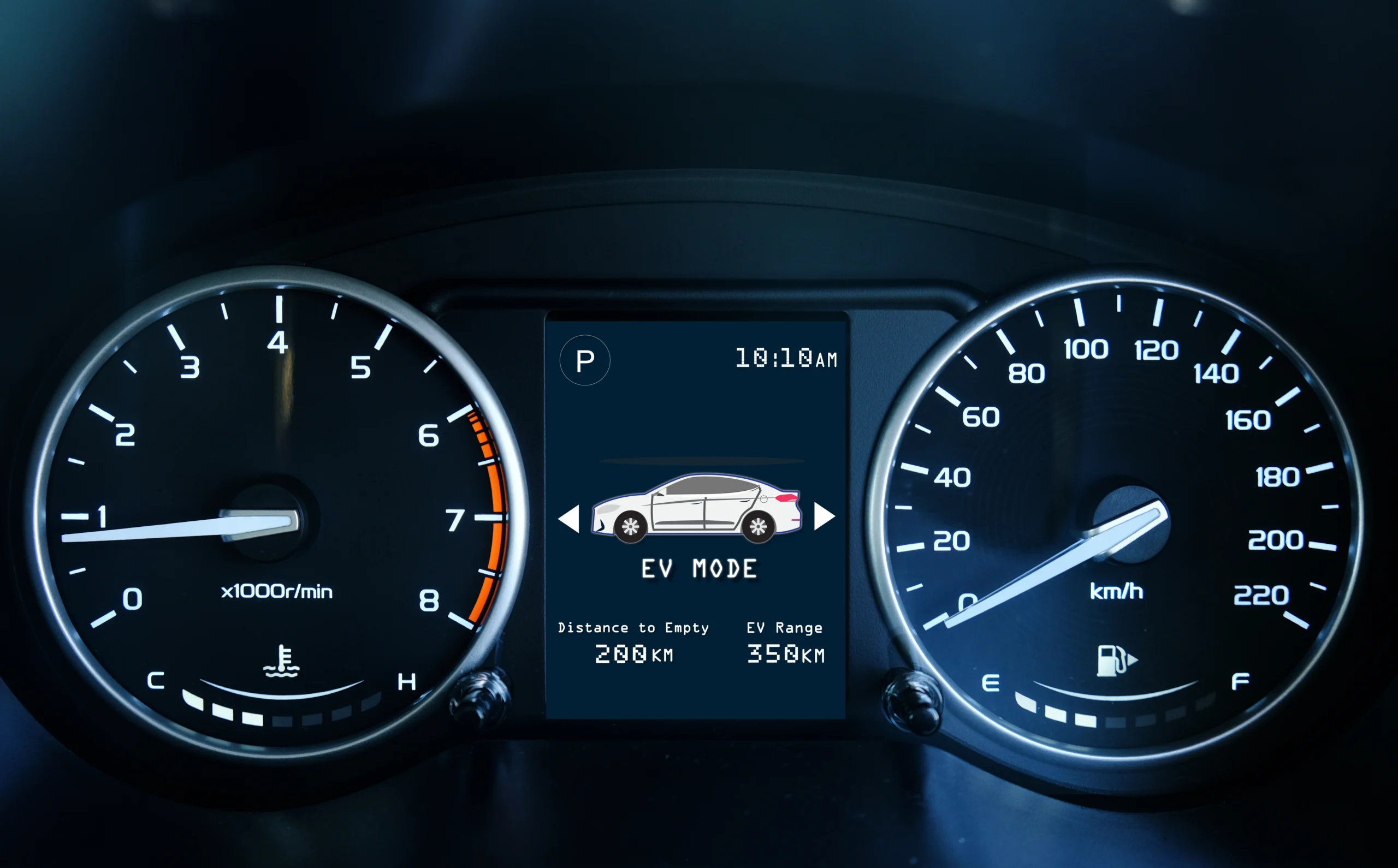The brakes—everyone who has ever driven or ridden in a car, train, or plane owes them a great deal. Without our brakes, we couldn’t stop, and getting around by any means other than on foot or horseback would basically be unthinkable. Even early horse-drawn vehicles including buggies and carts relied on brakes to be able to come to a stop safely. This was the beginning of the mechanized system of slowing and stopping that eventually became the brakes we use in our cars today, but the systems used to apply friction to the wheels have lived a multitude of different lives and come in forms nearly as varied as the different kinds of cars they’ve been used in over the years. So travel back in time with us now as we examine the history of the humble brake from horse-drawn carriages to the most advanced electronic braking systems used in cutting edge autonomous vehicles today.
The Humble Beginnings: Braking in the Era of Horse Power
Brakes on horse-drawn vehicles were primarily designed to prevent the carriage or wagon from moving when stationary or to control its speed when moving downhill, especially to ensure it didn’t roll into the horses. These brakes usually consisted of a simple mechanical system: a lever that the driver could operate to press wooden blocks or metal shoes against the iron-rimmed wooden wheels, creating friction to slow down or stop the vehicle.
When automobiles began emerging, the foundational concept of using friction to halt movement was carried over. However, the speeds and dynamics involved with motorized vehicles demanded a more sophisticated and efficient system than the rudimentary brakes of horse-drawn carriages.
Many early automobiles adopted a band brake system, which was somewhat reminiscent of the block-on-wheel method but more advanced. In this setup, a band lined with friction material would constrict around a drum when the brake was applied, slowing the wheel’s rotation. This approach was eventually improved upon with the introduction of drum brakes, where brake shoes pushed outward against the inside of a rotating drum.
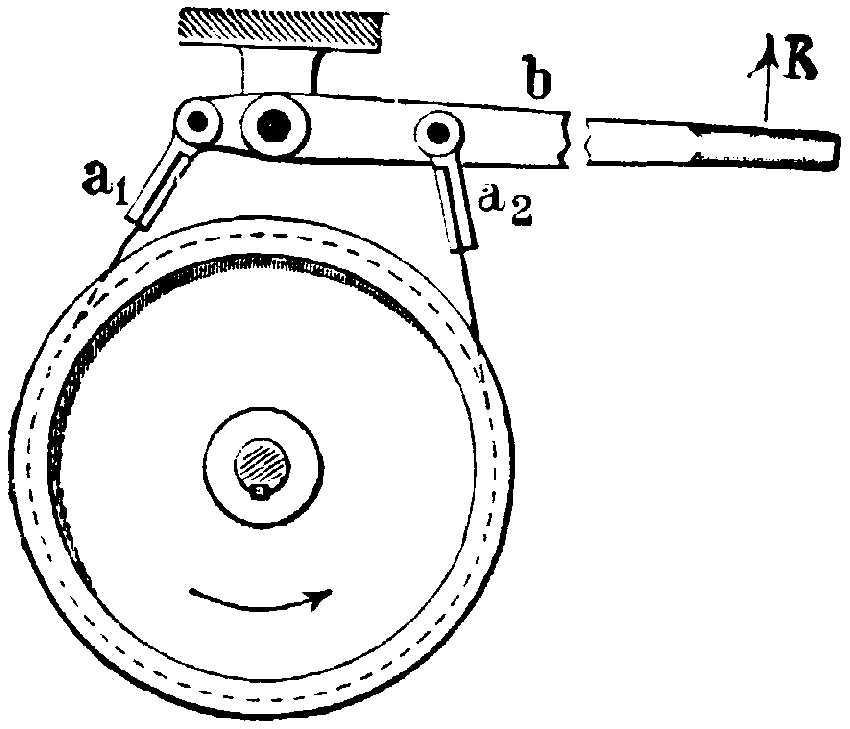
In essence, while the basic principle of using friction to slow or stop movement was borrowed from horse-drawn vehicles, the specifics of automotive braking systems had to evolve rapidly to meet the demands of modern transportation. The legacy of those early braking concepts is seen in the continued use of mechanical leverage and friction materials, even in today’s highly advanced vehicular brake systems.
The Dawn of Motor Power: Mechanical Brakes Take the Wheel
One of the earliest forms of automobile brakes was the external contracting band brake. This system involved a band that would wrap around a drum on the wheel when the brake was engaged. The tightening of this band around the drum would create the necessary friction to slow or stop the vehicle.
As automobiles evolved and speeds increased, there was a pressing need for more effective brakes. This led to the development of the internal expanding drum brake. In this design, brake shoes fitted with friction material would push outward against the inner surface of a drum attached to the wheel, slowing its rotation. The mechanism was usually activated using rods and levers, with the force being applied manually by the driver.
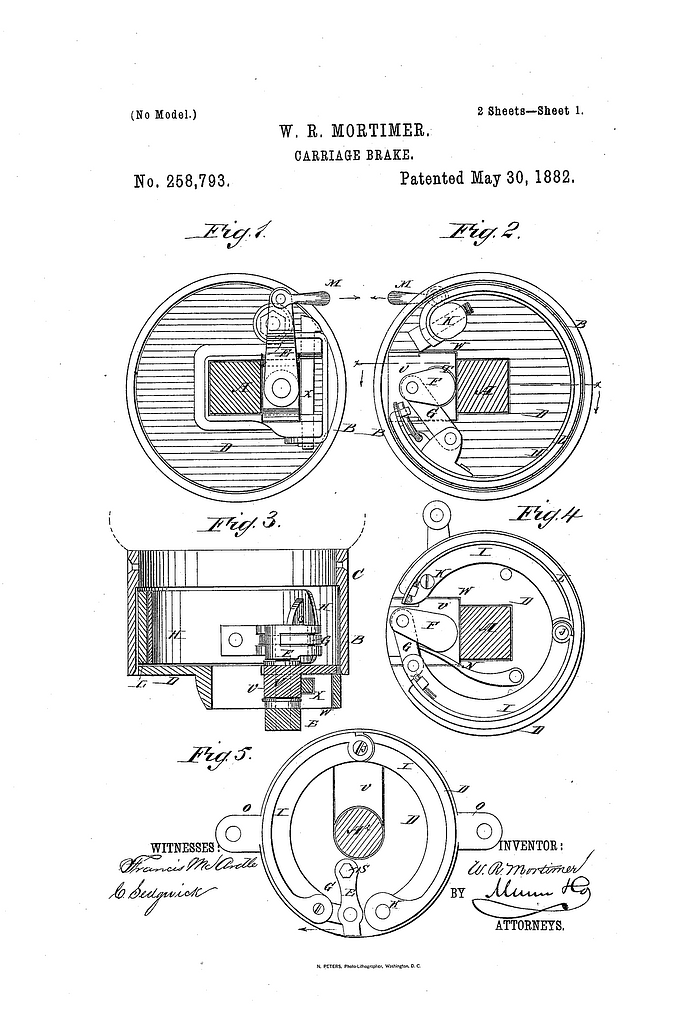
Internal expanding drum brakes began to gain traction and become a standard feature on automobiles during the early 20th century. While the exact timing varied by manufacturer and region, a significant turning point was in the 1920s.
The advantage of internal expanding drum brakes over the earlier external contracting band brakes was evident in their superior stopping power and efficiency. They consisted of brake shoes that expanded outward to press against the inner surface of a drum, creating friction to slow down or stop the wheel. This design was not only more effective but also better protected from external elements like dirt and water, which could impair braking performance.
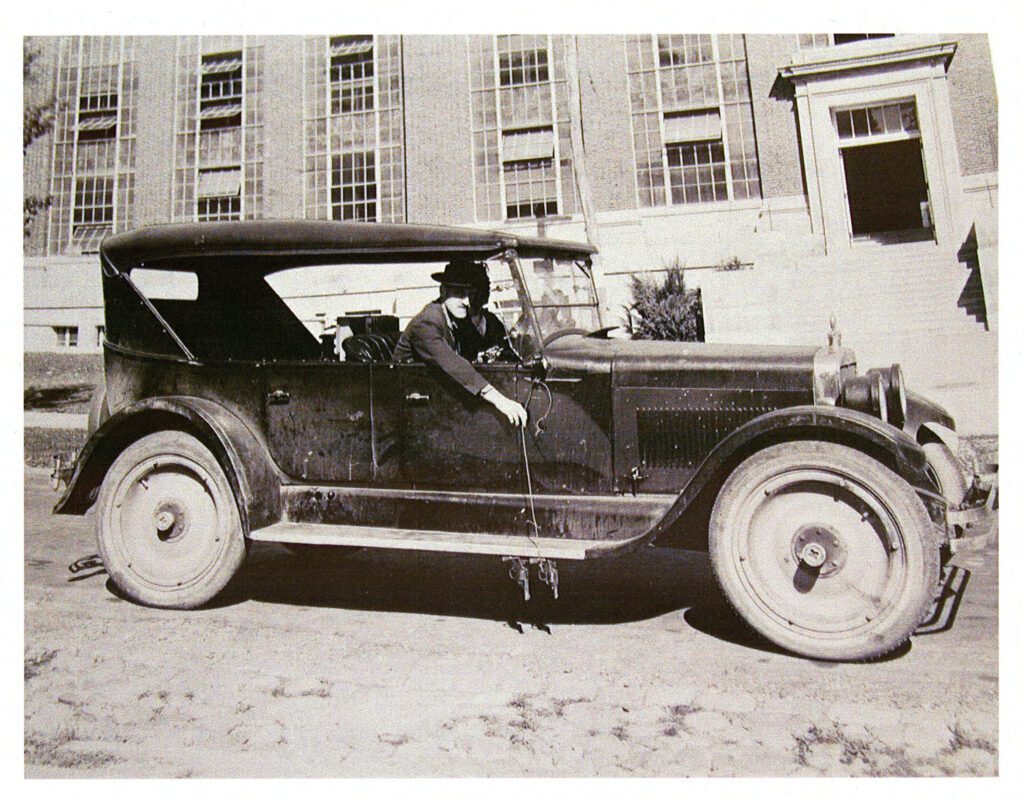
Braking Under Pressure: Hydraulics Enter the Scene
The roaring twenties weren’t just about jazz and flapper dresses. Behind the automotive curtains, innovation thrived. Malcolm Loughead, whose name later evolved to Lockheed and whose brother founded the company that we know today as Lockheed Martin, in a fitting parallel to the brake’s evolution, introduced the world to hydraulic brakes. By channeling brake fluid to transfer force from the pedal to the brake shoes, the hydraulic system self-adjusted, ensuring more consistent wear and robust stopping. It wasn’t just an upgrade—it was a revolution.
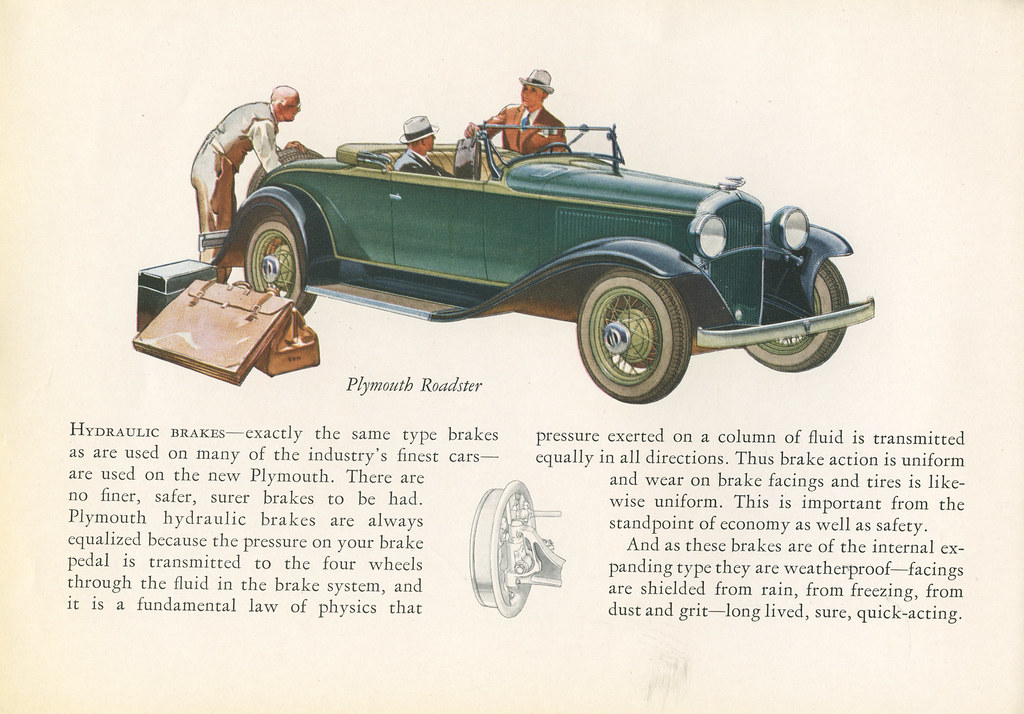
One notable milestone was in 1924 when four-wheel hydraulic actuated internal expanding drum brakes were introduced by the Chrysler Corporation on their Chrysler Four model. This combined the efficiency of the internal expanding design with the consistency and force multiplication of a hydraulic system, marking a significant advancement in braking technology. By the 1930s, most major automobile manufacturers had incorporated hydraulic braking systems into their vehicles, solidifying their position as a standard feature in automotive design.
Trading Drums for Discs: The Ascendancy of the Disc Brake
Disc brakes began their journey into mainstream automotive use in the 1950s and 1960s. While they had been experimented with earlier in the 20th century and even saw some use in racing and high-performance cars, it wasn’t until this period that their advantages over drum brakes in regular passenger cars became widely recognized. Factors like better heat dissipation, consistent performance in wet conditions, and ease of maintenance gave disc brakes a clear edge.
Disc brakes in cars operate using the fundamental principle of friction to convert kinetic energy into heat, thus slowing or stopping a moving vehicle. At the heart of the disc brake system is the brake disc, often made of cast iron or composite materials, which rotates with the wheel. When the brake pedal is pressed, hydraulic fluid pressurizes brake calipers that house brake pads. These pads are then squeezed against the rotating brake disc, and the friction generated between the pads and disc slows down the wheel and, by extension, the car.
The primary differences between disc and drum brakes stem from their design and performance characteristics. Disc brakes generally provide better heat dissipation, which means they are less prone to “brake fade” (a reduction in stopping power) under heavy use, such as repeated hard stops or downhill driving. Their open design also means they perform more consistently in wet conditions, as water can be easily shed from the rotor.
By the 1970s, many new cars, especially in the United States and Europe, came equipped with disc brakes on the front wheels, given the front brakes do the majority of the work during stopping. As technology and manufacturing processes improved, the 1980s and 1990s saw an increasing number of vehicles adopting disc brakes for all four wheels. By the turn of the 21st century, disc brakes had essentially become the standard for most passenger vehicles, especially in front-wheel configurations, with drum brakes becoming more of the exception, often reserved for rear wheels in certain economy cars or older models.
Of Power and Precision: Braking Enters the Electronic Age
As cars sped into the latter half of the 20th century, the complexity of ensuring a safe stop grew. Power brakes, harnessing engine vacuum, amplified the force drivers applied, making stopping more intuitive and less of a calf workout.
Then, in a feat of engineering that echoed mankind’s moon landing, Anti-lock Brake Systems (ABS) graced the automotive stage. ABS represents a pivotal advancement in vehicular safety, providing enhanced control to drivers during braking events, particularly under slippery or abrupt stopping scenarios. Unlike traditional braking systems, where a hard press on the brake can lock up the wheels, ABS prevents wheel lock-up by modulating brake pressure in response to detected wheel slip. Using wheel speed sensors, ABS rapidly pumps the brakes (many times per second), which assists in maintaining steering control during an emergency stop or when braking on a slippery surface.
The invention and implementation of ABS were significant for several reasons. The system directly addressed road safety by mitigating the risks of skidding and loss of control during hard braking. Drivers found they could maintain steering control during an emergency braking event, enhancing their ability to avoid obstacles while braking and reducing stopping distances on slippery surfaces. In the context of automotive safety evolution, ABS has played a quintessential role, enabling the development of further advancements such as electronic stability control and brake assist systems, and has now become a standard feature in most vehicles, substantiating its crucial role in ensuring safer driving experiences. Originally a luxury, the undeniable safety benefits soon made ABS as ubiquitous as radios in cars.
Digital Mastery: EBD and Brake-by-Wire Redefine the Future
As the 21st century dawned, brakes took a digital leap. Electronic Brakeforce Distribution (EBD) arrived with promises (and deliveries) of optimally distributing force between wheels, based on dynamic factors like load and speed. This was no longer just braking—this was art.
Check out this video comparing a vehicle with and without EBD.
Brake-by-wire, a concept that sounds like science fiction, also made its debut. Here, the traditional mechanical linkage between pedal and brake vanished. Instead, electronic impulses transmitted drivers’ intentions, offering razor-sharp responsiveness and paving the way for an autonomous driving future.
When a driver presses the brake pedal in a brake by wire system, instead of applying hydraulic pressure directly to the brakes, a sensor measures the pedal force and travel, then sends this data to an electronic control unit (ECU). The ECU processes the information and determines the required braking force for each wheel. Then, actuators at each wheel apply the necessary force to the brakes.
With this next revolution in braking at hand, drivers can look forward to the standardization and eventual ubiquity of brake by wire systems in consumer cars.
Towards Tomorrow: The Confluence of Green and Machine
Today, as our roads echo with the silent hum of electric vehicles (EVs), braking has adopted a dual role. Regenerative braking, a staple in EVs, harnesses the kinetic energy usually lost during braking, feeding it back to replenish the battery. It’s efficiency and sustainability, seamlessly integrated.
With autonomous vehicles no longer a distant dream, brakes are becoming a nexus of data collection and machine learning. They’re not just about stopping anymore—they’re about anticipation, adaptability, and precision.
From the horse-drawn carriages of Dickensian streets to the autonomous marvels on Silicon Valley highways, the brake’s journey mirrors our relentless quest for progress, safety, and perfection. It serves as a testament to human ingenuity and our ability to evolve with the times. As we barrel toward an automotive future of unknowns, one thing remains certain: brakes, in whatever new form they adopt, will be there to ensure we can always safely stop to appreciate the journey.


